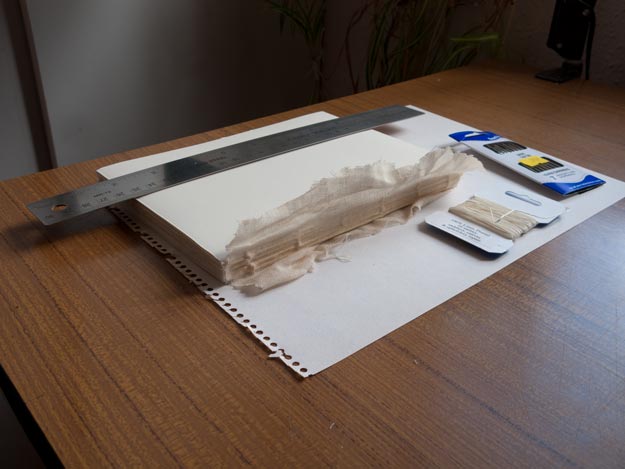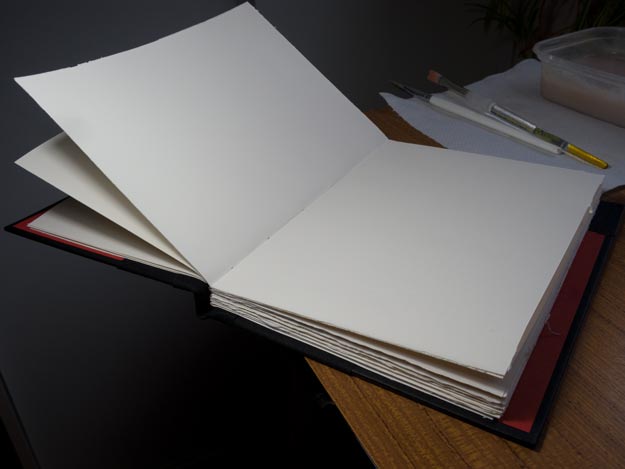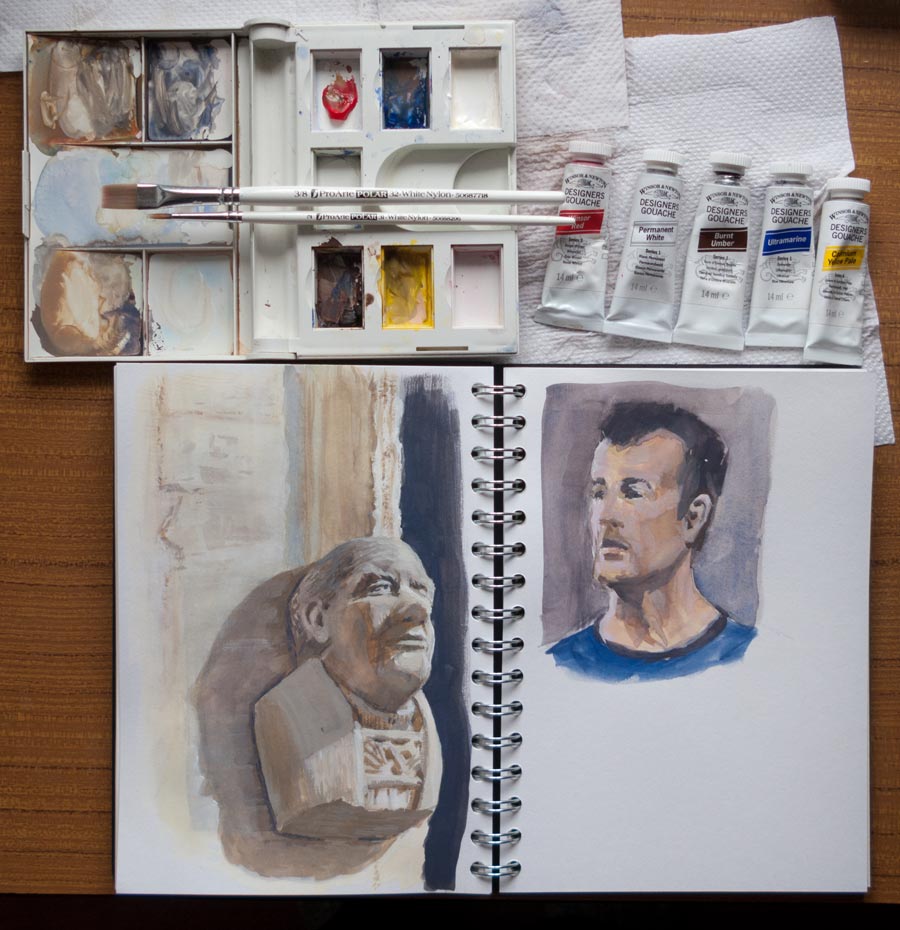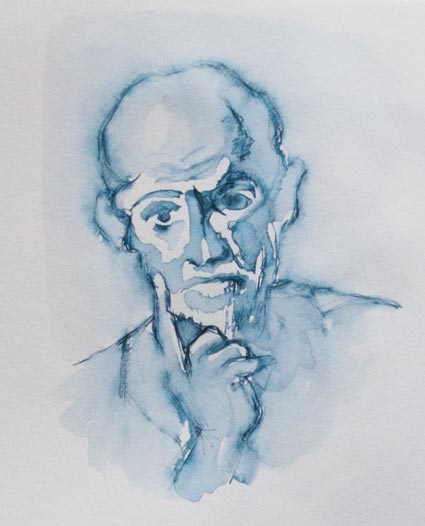
Muslin glued on to the stitched book block

The embossed dolphin saved Alan Titchmarsh from the knife.

30 blank pages, ready to go.
One thing that will stop one of my experimental sketches from going any further is when the surface of the paper starts to break up due to too much overworking with wet paints and inks. Watercolour paper can take all kinds of abuse and the hot pressed variety is smooth enough for ink drawings, but shop-bought watercolour sketchbooks are quite expensive and tend to have textured paper. The ideal solution is to make my own, which works out to be quite cheap and I can choose the size and type of paper.
This sketchbook was made from a couple of imperial (30 x 22 inch) sheets of 90lb Fabriano Artistico HP, cut, stitched and bound by following the instructions found in the links on Ed’s sketchbooks and paper page. This makes a 30 page (60 side) 5½ x 7½ inch book.
The covers were cut from an old hardback, bought from a charity shop for £1 (very nearly an Alan Titchmarsh novel, but that was saved by the embossed dolphin on Michelle Paver’s Gods and Warriors). The hardback covers are slightly too wide, but this will help protect the pages when being stuffed into a backpack. The height needed to be trimmed down close enough to the pages so that clips can be attached when sketching on a windy day. I used a craft knife to cut through the cardboard just enough to peel it away from the backing paper, which was then folded over and glued down to make a clean edge.
Apart from the stitching between the folios, the whole thing is held together with PVA white glue. By chance, I found some bookbinding tape in an old sewing basket which was ideal for joining the two hard covers and making a flexible spine. Another tip from Ed: during the final stage of pressing the sketchbook under a pile of heavy books while the glue dries, place some thin plastic between the cover and the end leaves to prevent the pages from buckling.
Now to pluck up the courage to sully the first page…





